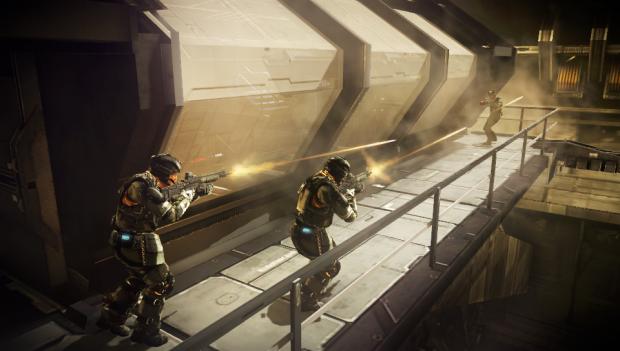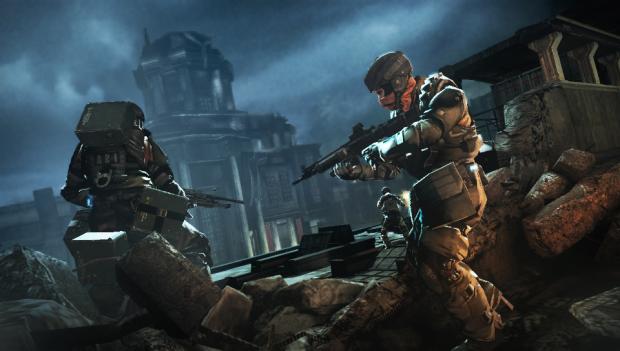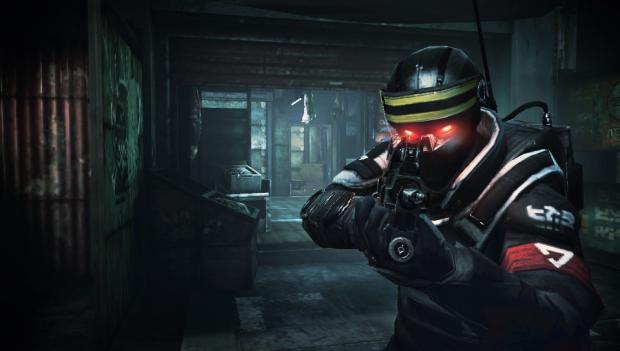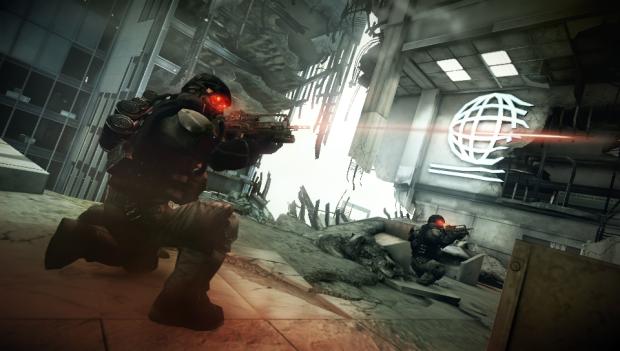Killzone: Mercenary Preview – A Brutal Experience
After the mediocre performance of Resistance: Burning Skies and the frankly abysmal Call of Duty: Black Ops Declassified, we were beginning to worry about the future of the first person shooter on the Vita. Sony’s handheld has proved it has the graphical chops to present a shooter that’s great on the surface, but we were getting worried that it would never produce the goods under the hood. Killzone: Mercenary, the fifth game in Guerilla’s landmark series and second handheld iteration (after the PSP’s Liberation), is about to silence those fears. Brutally.
Using a modified version of Killzone 3’s graphics engine and built from the ground up to accommodate the unique features of Sony’s little wonder-toy, Mercenary is set to be the game that proves just what an FPS can do on the PlayStation Vita. Beginning just after the events of the original Killzone, Mercenary sees protagonist Arran Danner fulfilling contracts for both the ISA and the Helghast through events that occur simultaneously with the story arcs of Killzone 2 and 3.
I got my hands on a preview build of a level entitled Lightning Strike last week, and blasted my way through around forty minutes of genuinely brilliant handheld action.

Mercenary is impressive right off the bat, the graphical detail combining with the effective use of colours, smoke and shadows to present a game-world that manages to be grim and grimy yet almost beautiful at the same time. The dark colours are off-set by browns, reds and golds to create a rusted, tarnished look that is now expected by fans of the series, and efficient use of screen-space means that even if you’re caught off-guard day-dreaming, you can react quickly in a pinch.
New developers Guerilla Cambridge – formerly SCE Cambridge and now a subsidiary of Guerilla Games – have made a fair bit of noise about the overhauled weapon loadout, and with good reason. There is a huge selection of guns, body armour, gadgets and explosives on offer in Mercenary, all purchasable through black market terminals with cash earned for completing missions, successfully meeting secondary objectives and committing good, old-fashioned murder. Head shots, long range kills, stealth takedowns and multiple kills earn in-game currency that Danner can spend with the fence known as Blackjack to refill ammo and explosives and buy new toys. Loadouts can be swapped out at any of these terminals mid-mission, though you can still salvage ammo from dead enemies.
The guns themselves seem to have been tweaked, too. Killzone 3 was no slouch when it came to meaty, impactful weaponry, but there’s something about Mercenary that feels incredibly brutal. Equipping the shotgun is a cathartic joy, the boom and blast of each close-quarters kill translating through the Vita and making every second an exhilarating rush. The gun sounds are spot-on, and played with headphones the audio direction is amazing; Helghast shout orders to one another, reacting to your actions, simple grenade explosions rattle the entire gameworld, and the metallic chirrup of machine gun fire echoes around the bronze walkways to immerse you completely in every firefight.

Getting up close and personal with an enemy allows you to either hit triangle or tap the screen for a violent melee kill, activated by swiping the screen in accordance with a guidance arrow. There appear to be over half-a-dozen different melee animations and each one is reassuringly nasty.
The section I played was set on a weapons platform used by the Helghast (or “Higs”) to blast ISA ships out of orbit. Sent in with a partner who dies so quickly he might as well be wearing a red shirt, Danner is tasked with hacking the weapons system so that ISA command can turn the orbital guns against the Helghast’s own forces. Making my way through the base, I came across a wandering sentry who I dispatched quietly and slickly, before immediately blundering directly into a loud, messy firefight. Tripping cameras will see the Helghast come running quickly (which is what I did), and gunfights are chaotic affairs to say the least.
The AI is good but not dazzling (but then this is only a preview build), and the enemy were flanking me, using cover, lobbing grenades and only Zerging me if they were equipped with shotguns. Several times I was able to survive by heading up a flight of stairs, equipping the shotgun and waiting for them to run impatiently into my line of sight.

I was required to hack several terminals using a cool puzzle game, wherein you must empty hexagonal cells by tapping on the HUD, before making my way to the gun controls, which I had to defend against several waves of Helghast troops before legging it to my extraction point. Danner is equipped with two guns, a selection of grenades and a lethal special weapon that can be anything from an aerial drone to a holographic decoy. I opted for the remote controlled Porcupine missile launcher to take down a Helghast troop transport, before digging in and defending the gun against the onslaught.
Having to resort to melee when my gung-ho approach to tactical warfare saw my ammo run out way too fast, way too often, was nail-biting, the one-hit-kill nature of the hand-to-hand combat off-set by the fact that every kill takes a few seconds, leaving you vulnerable for a shanking yourself.
I couldn’t sample the multiplayer or investigate the Career Record in this build, but there are a few counters such as Valor and Rank that will likely act as a scoring / levelling system to unlock better weapons for purchase or use in multiplayer. Your Valor rating is represented as a playing card, updated every day based on your ability to earn money. To begin with, you’re dealt a Joker, but can improve on that by performing well in each stage.

The controls are well designed for the Vita, though a few things could do with tweaking. For a start, the sprint button is defaulted to the rear touchpad, which is a pain in the arse to double tap when you’re legging it from a fight. You can switch it so that it’s on the same button as crouch (which is Circle), but that’s not perfect either – although it makes sliding into cover slightly easier.
Grenades are mapped to a button on-screen and can be set in the options menu to either be thrown instantly or readied in hand for a little more precision, and weapon switching and mini-map zooming is all take care of on-screen. The best use of the Vita comes from activating gyroscopic aiming, so you can move the Vita itself to line-up precision shots. It works in conjunction with the left stick and trigger, and is perfect for long-range shots with barely a gnat’s wing between life and death. I activated it thinking it would annoy me and found it immediately intuitive and useful.
To say that Killzone: Mercenary is looking like one of the series’ high points might be premature; to say it’s looking like the best FPS on the Vita is bang on the money, but hardly complimentary. So it’s better to say that, from what I’ve seen so far, Mercenary is looking like a brilliant, brutal experience that absolutely deserves to stand beside Killzone 2 and 3. The AI could use some tweaking, and we’re yet to see much of the multiplayer, but if the Lightning Strike mission is a good indication of what to expect then we’re all in for a treat come September. In short, Killzone: Mercenary is the shooter that the Vita has been waiting for.




